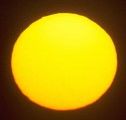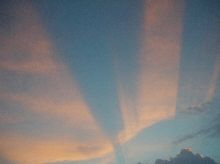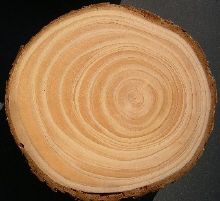
|
WELCOME TO SUN AND SKY
This site is based on thousands of sun and sky observations made since 1988 at a field in South Central Texas that I call Geronimo Creek Observatory. The goal for the site is to eventually include sky photographs and time series charts of measurements of solar ultraviolet, photosynthetic radiation, aerosol optical depth, the ozone layer and precipitable water vapor (PW). This site will also eventually cover sun and sky observations made during the annual burning season in Brazil (1995 and 1997) and annual calibrations at Hawaii's Mauna Loa Observatory(1992-2012).
This site will be expanded as time permits with sky photographs, time series charts of data, instrument information and various research projects. So I hope you will stop by again. If you find errors or would like to suggest new content, please send a note. Please also visit my personal sitefor more science.
Background. This research sprang from my brief tenure as writer of "The Amateur Scientist" column for Scientific American magazine. My final column was "How to Monitor Ultraviolet Radiation from the Sun" (Scientific American, 263, 106-109, August 1990). The two UV radiometers developed for this column led to novel kinds of miniature sun photometers, total column water vapor (PW) hygrometers and TOPS-1, a handheld UV sun photometer capable of measuring the ozone layer with high accuracy (~1 percent). TOPS-1 found a calibration drift in NASA's ozone instrument (TOMS) on the Nimbus-7 satellite (F. M. Mims III, Satellite Monitoring Error, Nature, 361, 505, 1993). This finding and a 1993 Rolex Award led to the research described here.
Please visit my revised and expanded home page at www.forrestmims.org. Questions: forrest.mims [at] ieee [dot] org.
|
 | AEROSOLS AND WATER VAPOR
These crepuscular rays appeared after sunset when a thick cloud of African dust from the Sahara desert arrived over South Texas. Particles of dust and smoke, volcanic ash, smog, pollen grains, fungal spores, bacteria, viruses, droplets of water in fog and higher clouds and the amazing variety of organic detritus in the air are collectively known as aerosols, all of which absorb and scatter sunlight. |
 | SOLAR ULTRAVIOLET AND OZONE
The instrument shown here is the USDA ultraviolet (UV) radiometer at Texas Lutheran University. It measures the UV-B wavelengths of the solar spectrum that significantly affect most forms of life. UV-B efficiently kills bacteria and viruses. While it stunts the growth of many plants, it also suppresses certain diseases that attack plants. Too much UV-B exposure can cause sunburn and even skin cancer in people. Too little UV-B can cause a vitamin-D deficiency that can lead to osteoporosis and various other health problems. |
 | SUNLIGHT AND LIVING THINGS
Photosynthesis and the warming of the earth are the two most important roles of sunlight in nurturing life. Sunlight has countless other effects on living things. For example, the tannin in this cross section from a canopy branch of a baldcypress (Taxodium distichum) was influenced by sunlight, the subject of my latest tree ring project. Sunlight also controls where certain mosquitoes breed, where lichens grow on trees and rocks, where algae and plankton grow in bodies of water and so forth. |
|
|